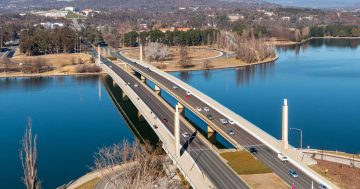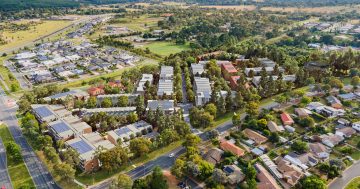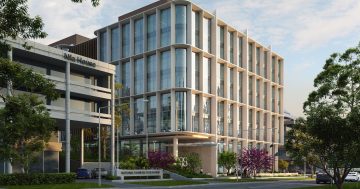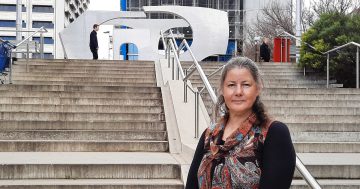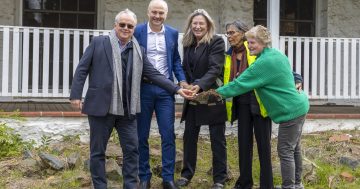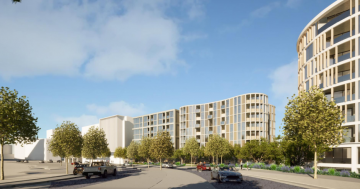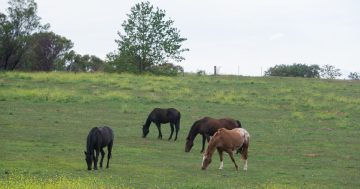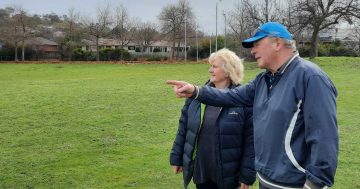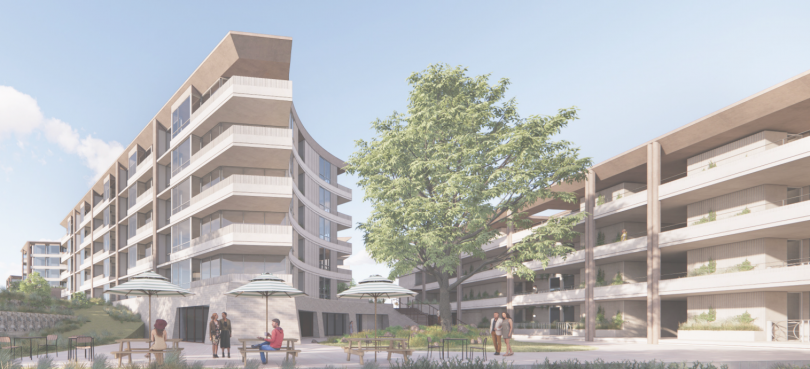
An artist’s impression of the LDK proposal, showing the multi-unit section. Images: Rothelowman.
LDK’s aged care project in Weston next to the horse paddocks is expected to start this year after the National Capital Authority gave the $143 million development the green light.
LDK Seniors’ Living plans to redevelop 5.4 hectares of designated land off the Cotter Road that used to be home to a motel into an aged care village.
The development will include 55 single-storey two to three-bedroom villas/townhouses, 261 one to three-bedroom units across four buildings up to five-storeys high with basement level car parking, 11 high-care rooms, and a Care Hub and associated clubhouse with facilities for the community.
LDK CEO Byron Cannon said work would start on the project as soon as the ACT Government approved the direct acquisition of some adjoining land for fire mitigation purposes, which would allow settlement to proceed.
He said the first step would be remediation of the site.
The NCA approved the proposal after LDK submitted revised plans in response to requests for more information about traffic and bushfire concerns, and design changes, mainly to do with the boundary treatment.
Mr Cannon said the proposal was mainly intact, with only minor changes being made to the plans.
“It was a really important step to turn that approval. We just now need to get the sign-off from the ACT Government, so once we get that ministerial consent, we’re on our way, hopefully,” Mr Cannon said.
The NCA received 12 submissions, with only one supporting the proposal outright, while 11 raised various issues.
The main concerns included the size of the development, traffic issues, management of the shared driveway, impact on heritage values of the Yarralumla Woolshed, and compatibility with adjacent land uses such as the horse paddocks and lighting.
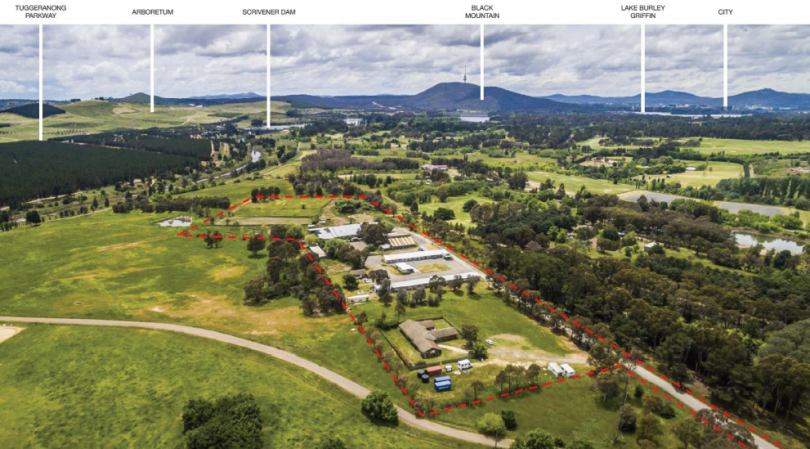
The 5.4 ha site is on the edge of Weston next to the Equestrian Centre and horse paddocks. Image: LDK.
Weston Creek Community Council did not oppose the development but raised concerns about the traffic implications for the Cotter Road, the main feeder from Weston Creek and the new suburbs of the Molonglo Valley to Adelaide Avenue, and the need for traffic lights to manage vehicles turning into and out of the site, particularly in peak times.
It also believed a bus stop would be advantageous to give workers and visitors a public transport option, which would require a safe crossing.
But the NCA disagreed, citing the traffic report which said the development would have a minimal impact on the intersection of the site access road at Cotter Road during the PM peak and generate a small increase in daily traffic volumes when considered in the context of existing conditions.
The report said the development was expected to generate 687 trips per day, including 131 trips during the evening peak hour.
But WCCC chair Bill Gemmell said the council would lobby Transport Canberra and City Services to instal lights and a bus stop.
“I don’t think the NCA has any idea how busy that road gets AM and PM,” he said.
“The traffic congestion in late afternoon and going to work time in the morning is such there is going to be a significant disruption for anybody trying to do anything except turn left.”
There were also concerns about how traffic would be regulated during the construction phase when there would be a large number of trucks entering and leaving the site.
Mr Gemmell said aged care workers were some of the country’s lowest-paid work workers, not all would be able to afford a car, and many visitors would be elderly themselves and not all would drive.
“The closest bus stop is 2.3 km away. Are they expecting these people to rely on private transport?”
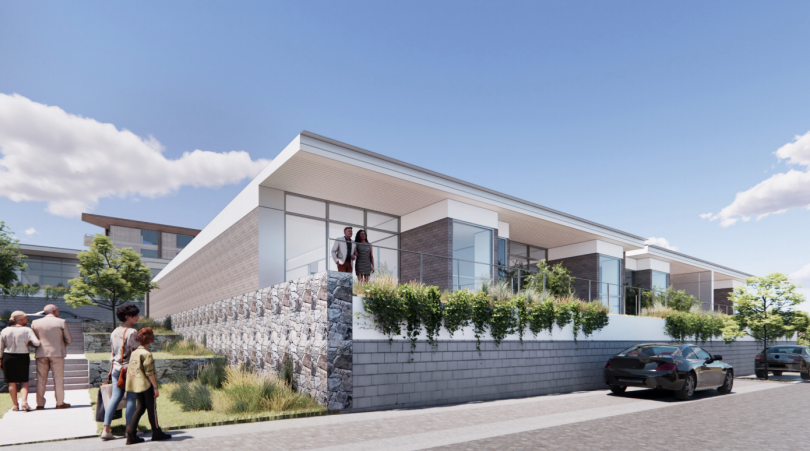
An artist’s impression of the low-rise villas. Image: Rothelowman.
But Mr Cannon said there were no further plans for traffic management.
“We went through and got all the updated reports that we needed to get to answer any questions that were needed for the whole development. The traffic was obviously a part of that. They were satisfied with that,” he said.
Mr Gemmell said the NCA should be able to take a broader view of developments and the council would be taking up concerns about its approach generally with Member for Bean David Smith and Senator David Pocock.
The NCA’s consultation report says advice will be sought from TCCS to address safety concerns in the shared driveway, such as stopping sight distance, queue lengths and sightlines.
The report says a 1.82-metre high perimeter fence is proposed for the site boundary to minimise conflict between the different user groups. As requested by the president of the Equestrian Centre, a solid Colourbond fence is planned along the eastern boundary to screen the development.
The NCA says the proposed dog park will be about eight metres from the solid Colorbond fence to ensure the dogs do not upset horses.
The report says an analysis shows the development will not adversely impact the vistas and views, with the tallest building reaching 18.65 metres, and nearby mature trees being around 17 to 20-metres high.
Perimeter roads and Asset Protection Zones are planned to deal with bushfires, and building materials will comply with national standards to increase resilience.
Lighting will be designed to meet the NCA’s Outdoor Lighting Policy requirements and comply with national standards to minimise light pollution.
It will include pole-mounted lights 4.6 metres in height on the boundary road, with bollard lighting on the laneways and pedestrian connections.
Mr Cannon said LDK had been updated on cost estimates in the context of the rising price of building materials and supply chain issues.
“We’re confident that by the time we’re fully into construction, we should be able to mitigate that risk,” he said.
The NCA’s consultation report can be found on its website.












